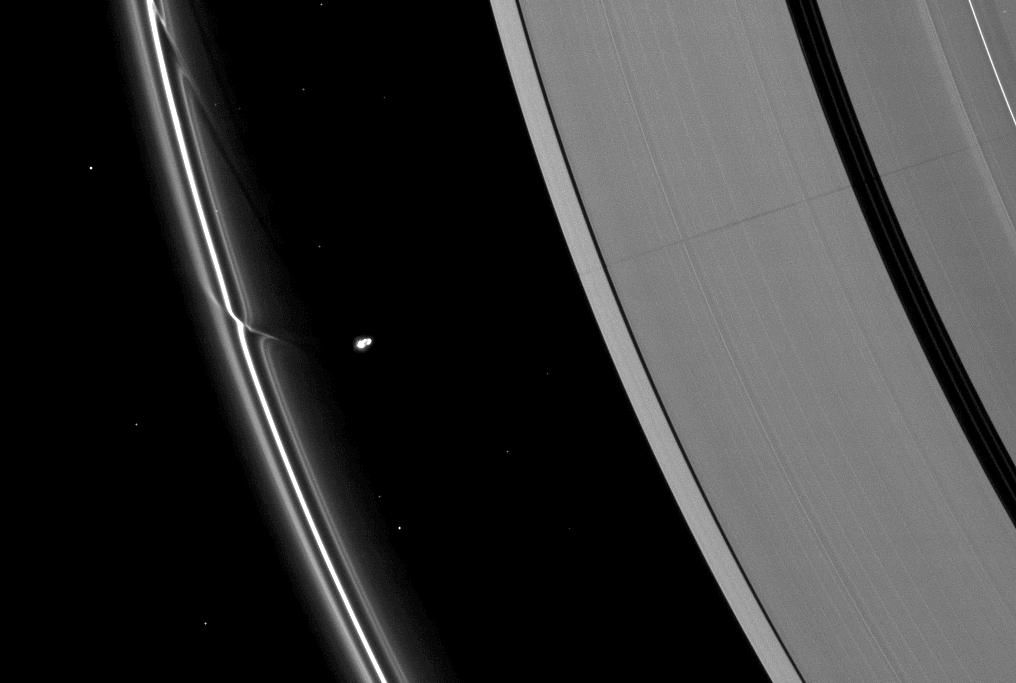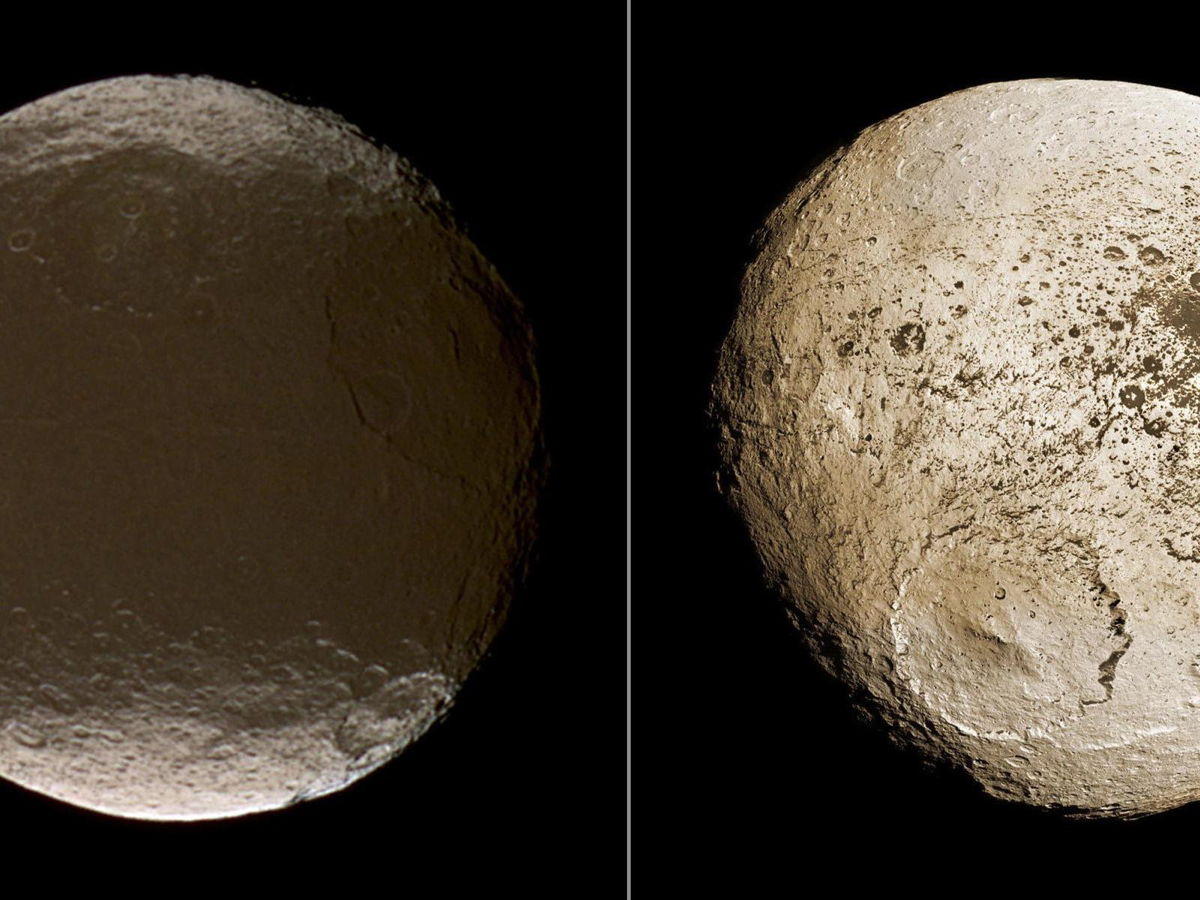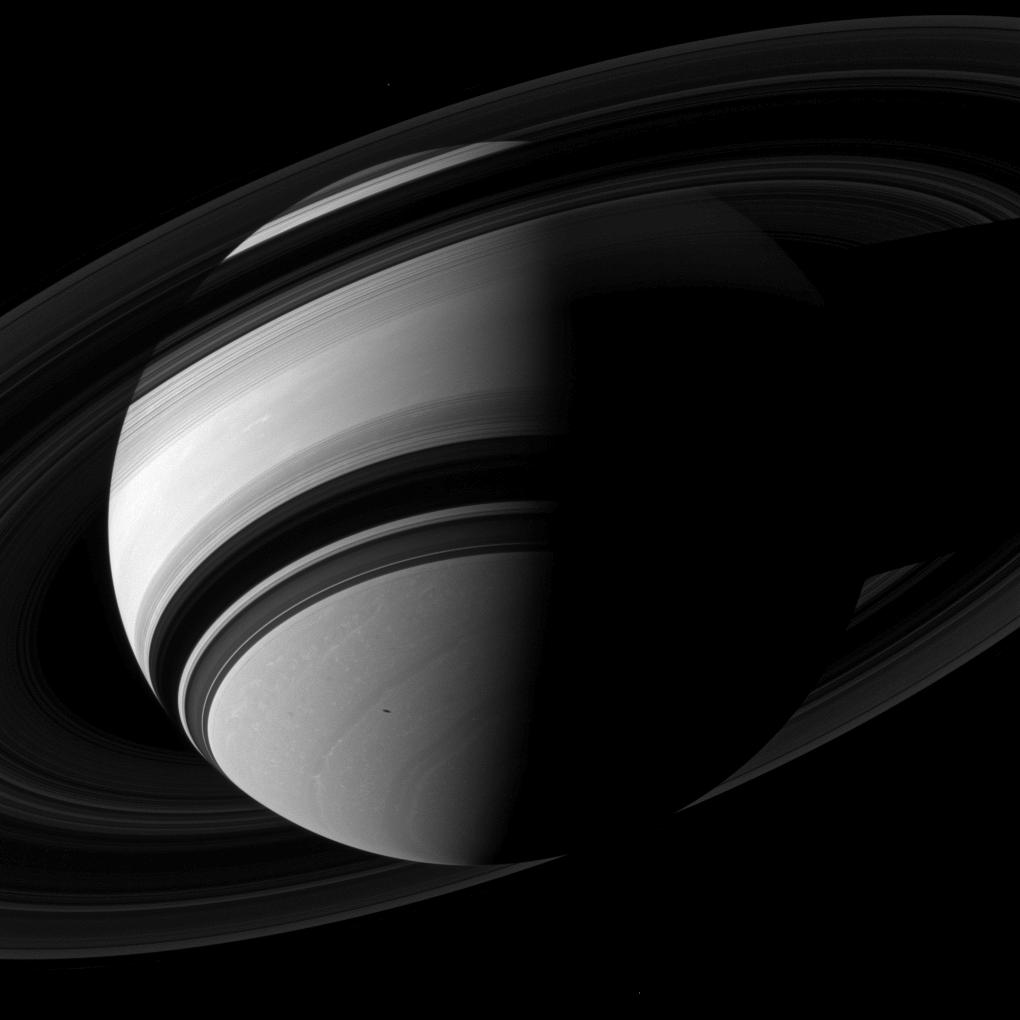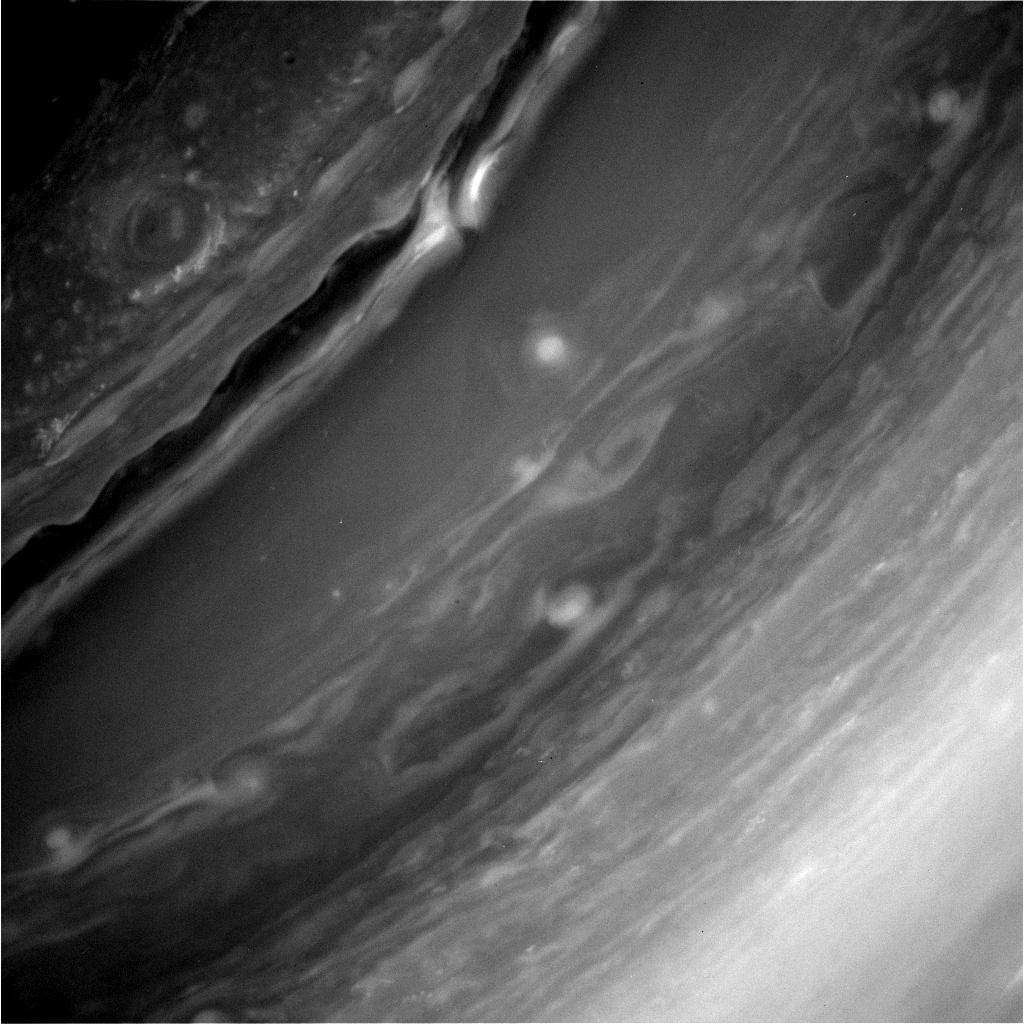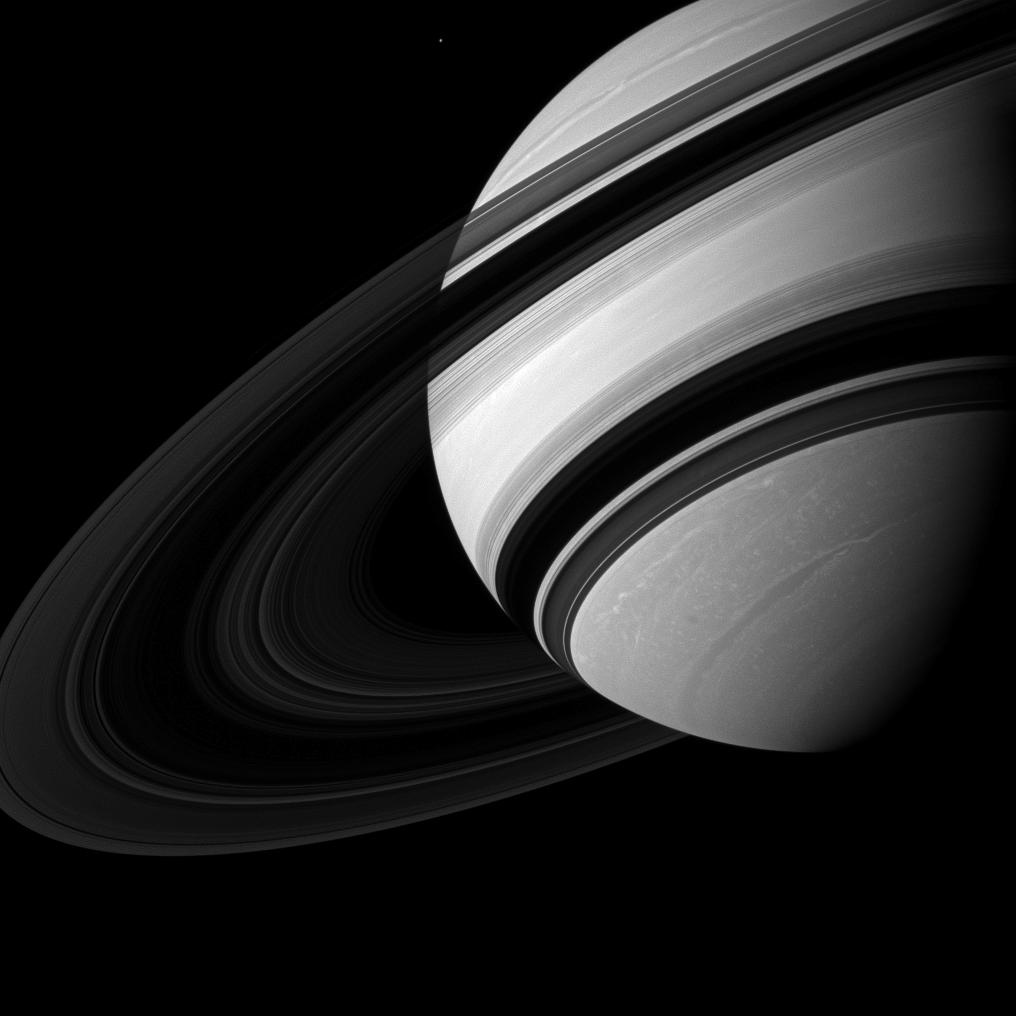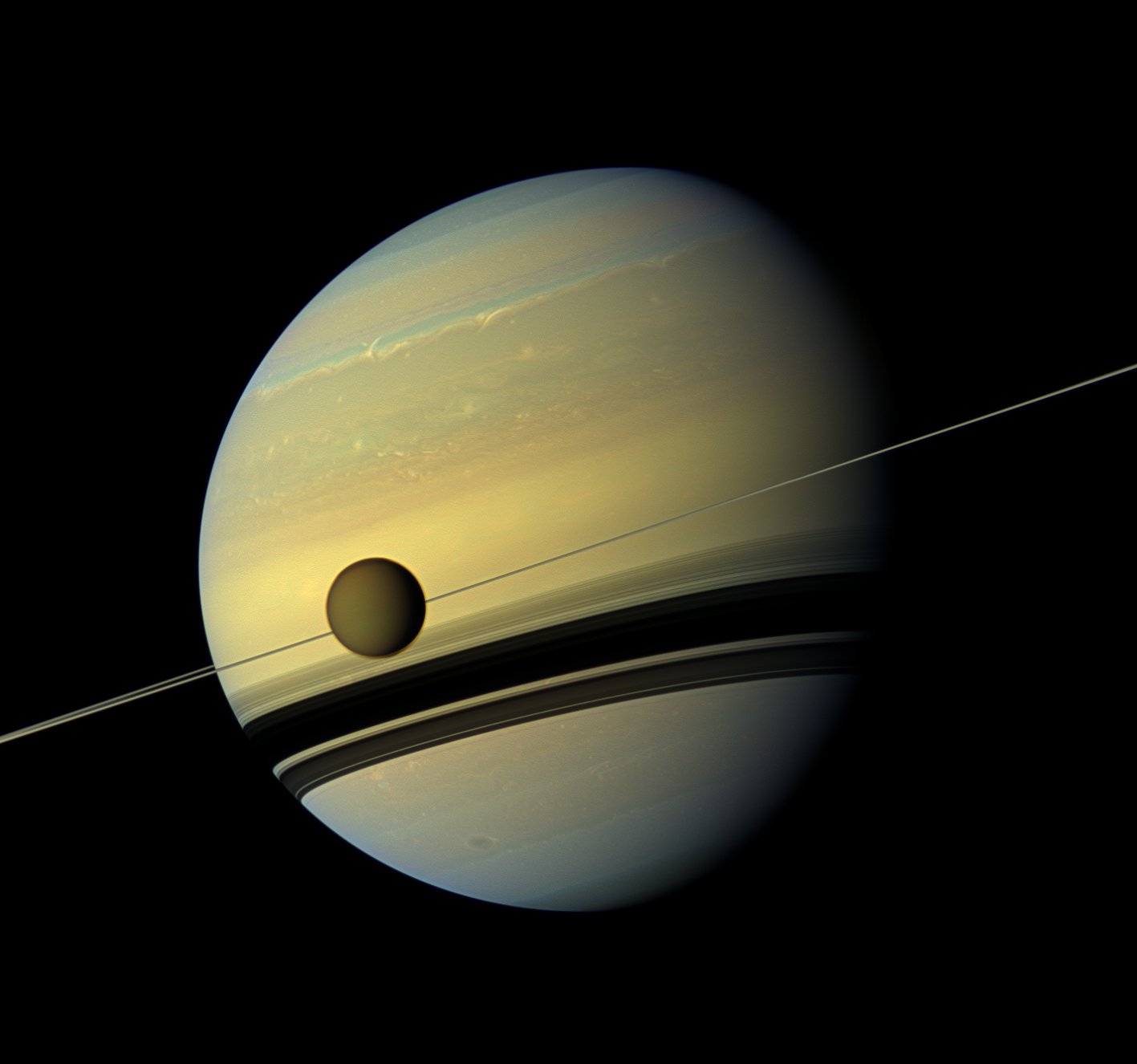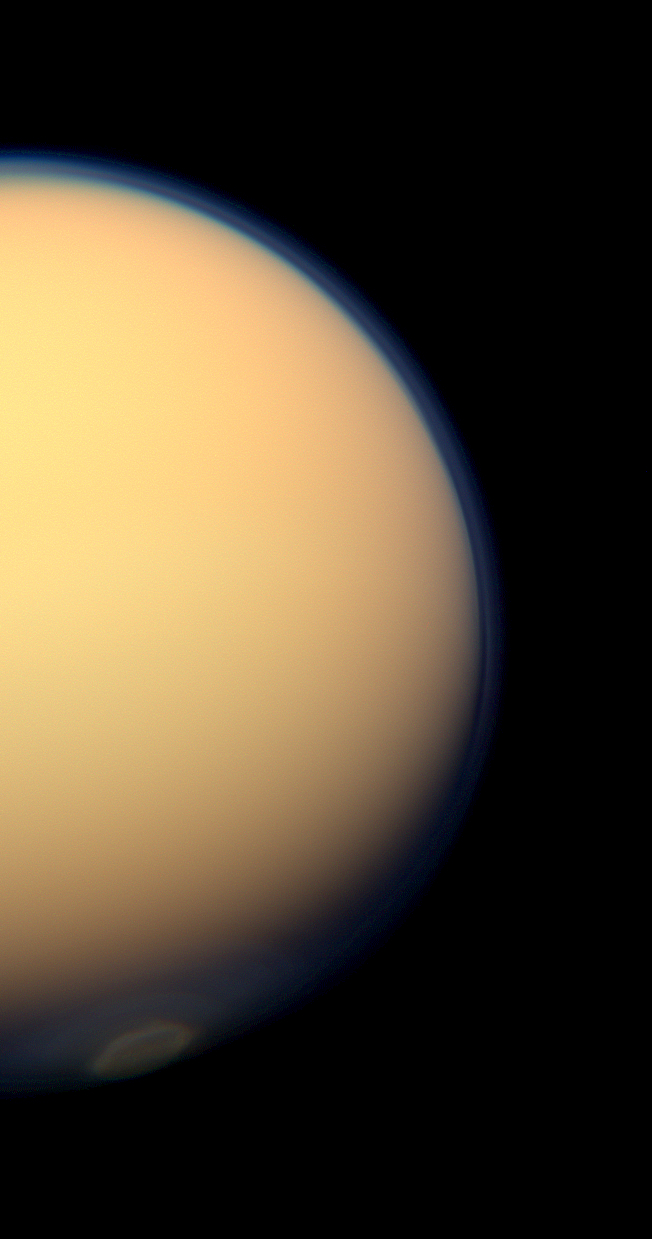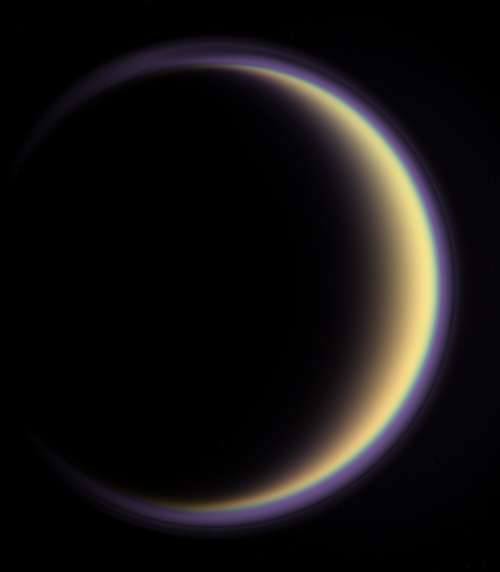Amazing Saturn Photos From NASA's Cassini Orbiter
Prometheus' Effects on Saturn's Rings
The effects of the small moon Prometheus loom large on two of Saturn's rings in this image taken a short time before Saturn's August 2009 equinox. A long, thin shadow cast by the moon stretches across the A ring on the right. The gravity of potato-shaped Prometheus (86 kilometers, or 53 miles across) periodically creates streamer-channels in the F ring, and the moon's handiwork can seen be on the left of the image. Image released Jan. 28, 2010 Released on March 26, 2013. [Full Story]
Global View of Iapetus' Dichotomy
These two global images of Iapetus show the extreme brightness dichotomy on the surface of this peculiar Saturnian moon. The left-hand panel shows the moon's leading hemisphere and the right-hand panel shows the moon's trailing side. Image published Dec. 10, 2009. Released on March 26, 2013. [Full Story]
Mimas, Janus and Saturn
This photo, taken in August by the Cassini orbiter, shows Saturn, Janus and Mimas as well as the planet's distinctive rings.
Saturn's Turbulent Surface
This image, captured by the Cassini orbiter on Christmas Eve (Dec. 24) and beamed to Earth on Dec. 26., shows details of Saturn's turbulent surface.
Mimas Dwarfed by Saturn
Saturn's moon Mimas appears near Saturn, dwarfed by its parent planet in this image. Mimas (246 miles, or 396 kilometers across) appears tiny compared to the storms clearly visible in far northern and southern hemispheres of Saturn. The image was taken with the Cassini spacecraft wide-angle camera on Aug. 20, 2012.
Titan, Saturn and Its Rings
This six-image mosaic from NASA's Cassini spacecraft captures Saturn, its rings and the planet's giant moon Titan. The probe snapped the shots on May 6, 2012, when it was about 483,000 miles from Titan. Image scale is 29 miles per pixel on Titan.
Titan's South Polar Vortex
The south polar vortex of Saturn's moon Titan stands out in this natural-color view from NASA's Cassini spacecraft, snapped on July 25, 2012.
Breaking space news, the latest updates on rocket launches, skywatching events and more!
Titan's Land of Lakes
NASA's Cassini spacecraft used a special spectral filter to peer through the hazy atmosphere of Saturn's moon Titan and see its strange hydrocarbon lakes. The images for this view, released on Dec. 23, 2013, were taken on Oct. 7 and feature the leading face of Titan as seen in red, green and blue spectral filters combined to create a natural-color view.
A Ring of Color Around Titan
NASA's Cassini spacecraft looks toward the night side of Saturn's moon Titan and sees sunlight scattering its atmosphere, forming a colorful ring. The images were acquired on June 6, 2012, when Cassini was about 134,000 miles from Titan. Image scale is 8 miles per pixel.
Scientists to Scan Titan's Atmosphere From Earth
The haze of Titan's atmosphere stands out in this image taken by the Cassini spacecraft currently orbiting Saturn.

Space.com is the premier source of space exploration, innovation and astronomy news, chronicling (and celebrating) humanity's ongoing expansion across the final frontier. Originally founded in 1999, Space.com is, and always has been, the passion of writers and editors who are space fans and also trained journalists. Our current news team consists of Editor-in-Chief Tariq Malik; Editor Hanneke Weitering, Senior Space Writer Mike Wall; Senior Writer Meghan Bartels; Senior Writer Chelsea Gohd, Senior Writer Tereza Pultarova and Staff Writer Alexander Cox, focusing on e-commerce. Senior Producer Steve Spaleta oversees our space videos, with Diana Whitcroft as our Social Media Editor.
